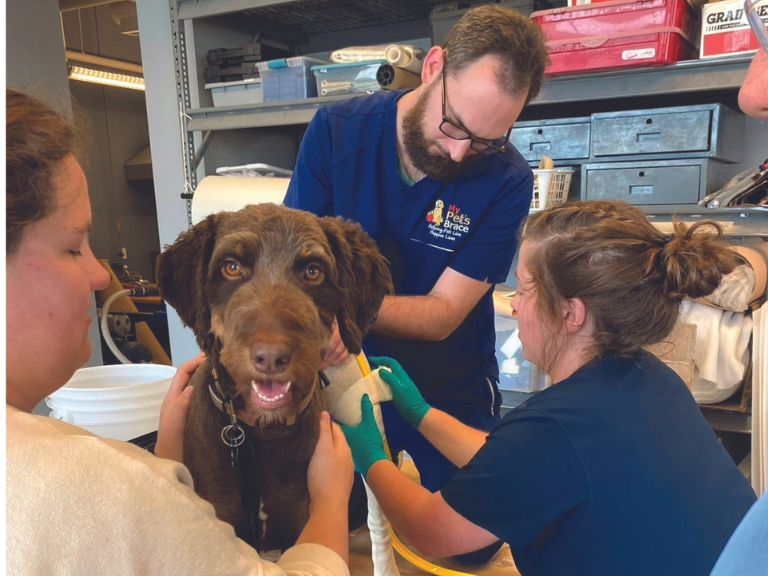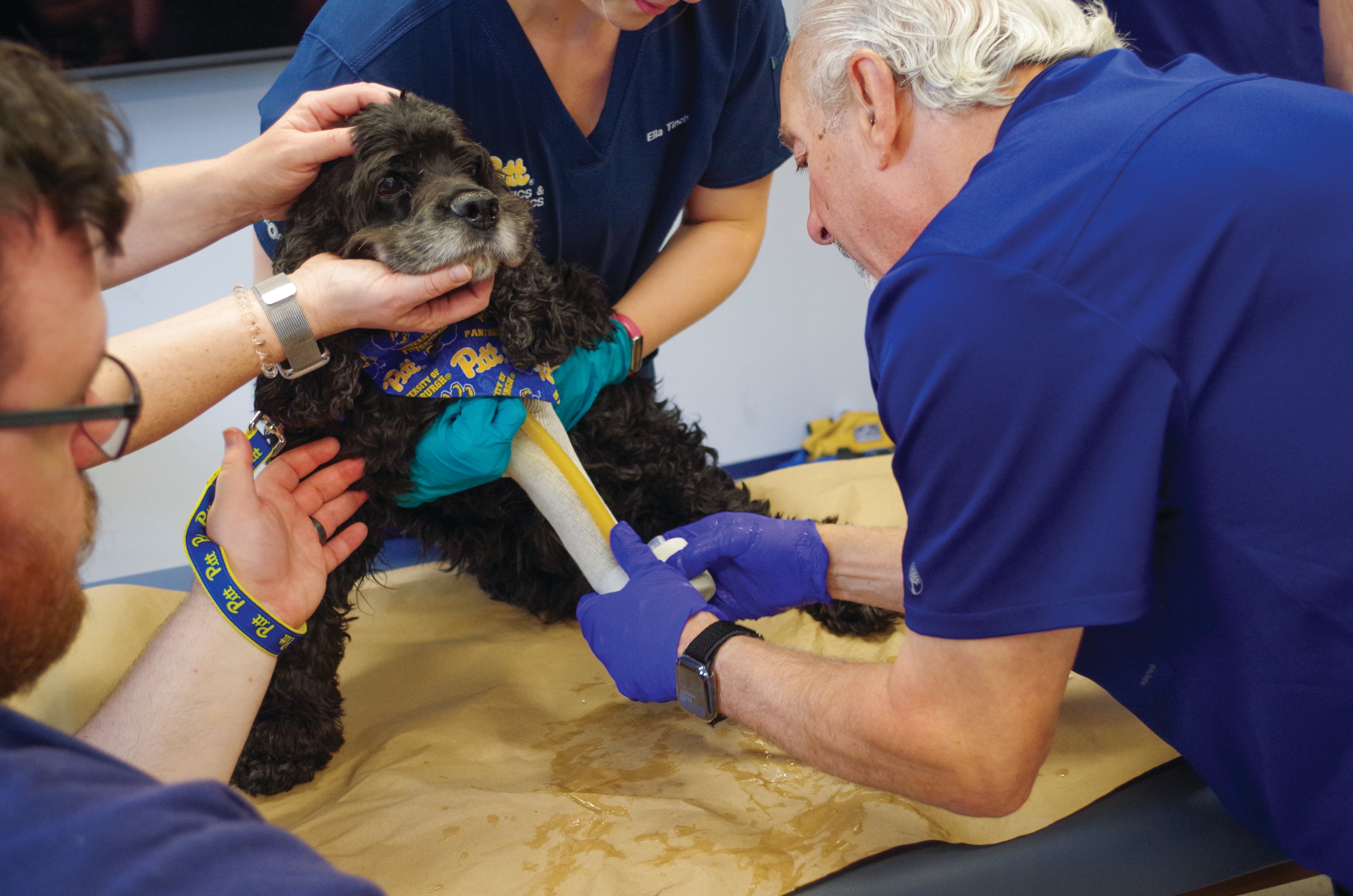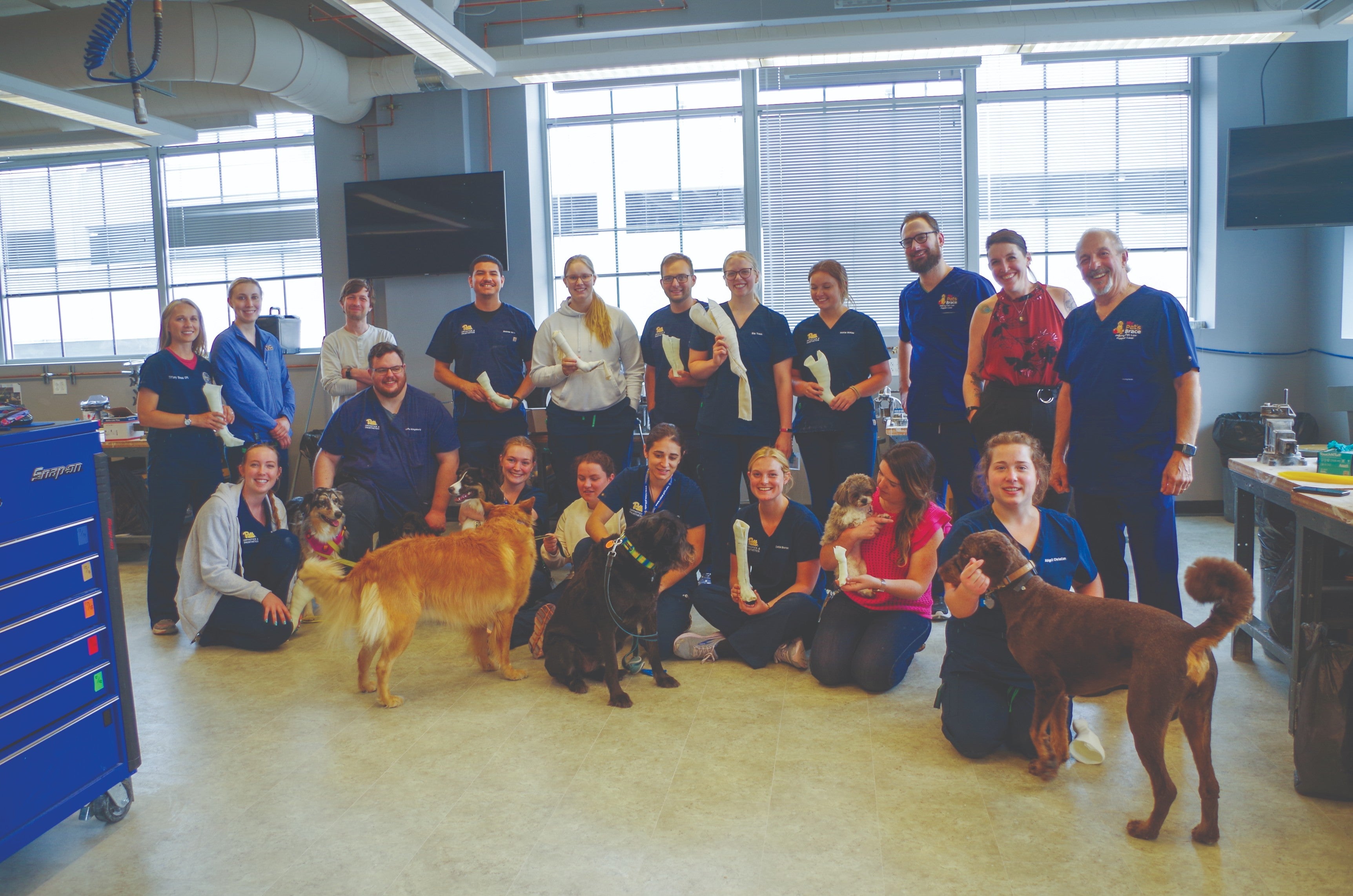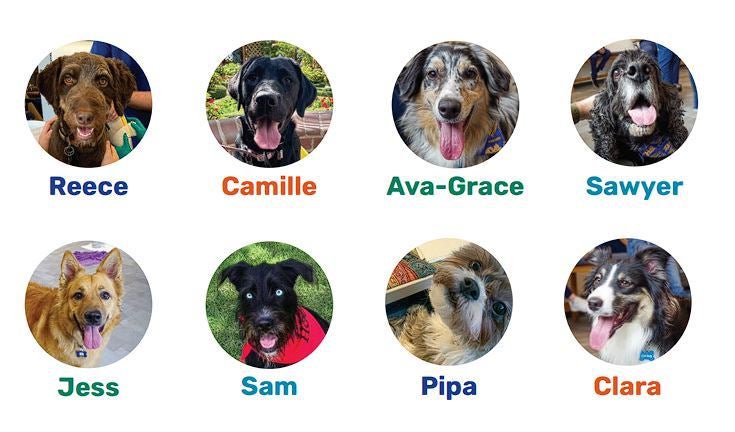
Clinicians from My Pet’s Brace show how to cast the leg of two-year-old Aussiedoodle, Reece.
Prosthetists by their nature—and profession— are dedicated to helping people overcome physical challenges. But now students in the Prosthetics & Orthotics (P&O) program are learning how their industry is expanding to help man’s best friend put their best paw forward.
With the help of its clinical partner, My Pet’s Brace™, and eight canine volunteers—many the pets of students and faculty—P&O faculty conducted a fullday workshop where they explained how braces can increase an injured animal’s mobility and improve their overall comfort.
“Many pets lose mobility due to arthritis, ACL/CCL injuries and other medical conditions,” says Helen Cochrane, assistant professor and P&O program director. “Orthotics can sometimes reduce the need for costly surgery, provide pain relief and extra support for limbs.”
According to P&O Instructor Andrew Biaesch, the workshop started with a lecture from My Pet’s Brace practitioners. They demonstrated techniques for measuring and capturing the shape of a canine’s leg using furry patient models. Students were then paired up to practice what they had learned.
Master of Science in Prosthetics and Orthotics (MSPO) student Abbey Christian attended the workshop with her two-year-old Aussiedoodle, Reece. She developed an interest in pet orthotics and prosthetics when working as a summer intern at Bionic Pets in Sterling, Virginia, where they treated a variety of animals, including goats, cows, cats, dogs and even elephants!
“The most amazing part of this field is getting to see the moment it clicks with the animals that their new device is there to help,” explains Christian. “The moment a pet runs for the first time since an injury and the excitement that overtakes their family is priceless.”
“Although the shapes of an animal limb and a human limb are very different, the physics and the general principles don’t change,” notes Biaesch. “The workshop helped to reinforce many of the techniques the students learn in the program and introduced some new techniques that translate well to human care.”

Twelve-year-old Cocker Spaniel, Sawyer, proved to be the perfect gentleman, allowing Jim Alaimo of My Pet’s Brace to get the perfect sample cast.
Cochrane notes that the field of pet prosthetics has grown in the past several decades. She says that although the vast majority of students will not work directly in this field, the workshop offers a broader view of how the industry is expanding, and how the techniques they are learning can be applied in different environments.
“Pitt’s MSPO program does a great job of offering workshops and information sessions to give students a full understanding of the field and what all it has to offer,” adds Christian. “They focus heavily on understanding the technical components of orthotic and prosthetic design, which allows for a holistic training for the students before they enter the field.”

Smiles all around after making new canine friends and developing new skills to help our furry friends in the future.
“Students are typically very excited to learn about new concepts,” says Biaesch. “That makes the transition from classroom to clinic more comfortable.”

Meet the Pups!
-----------
This article originally appeared in the Fall 2023 issue of Facets magazine.
